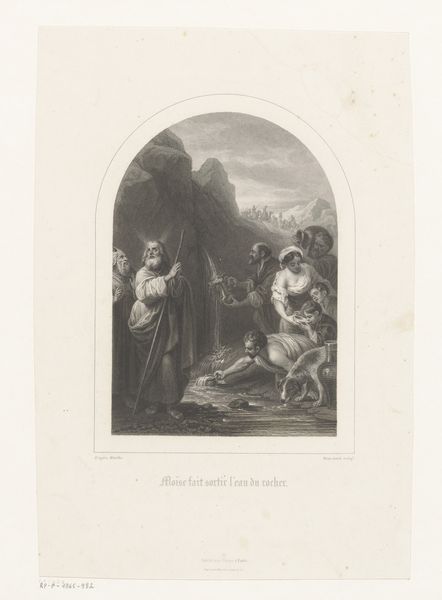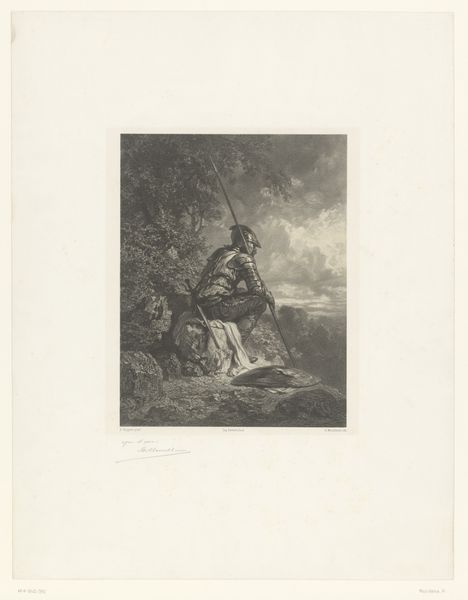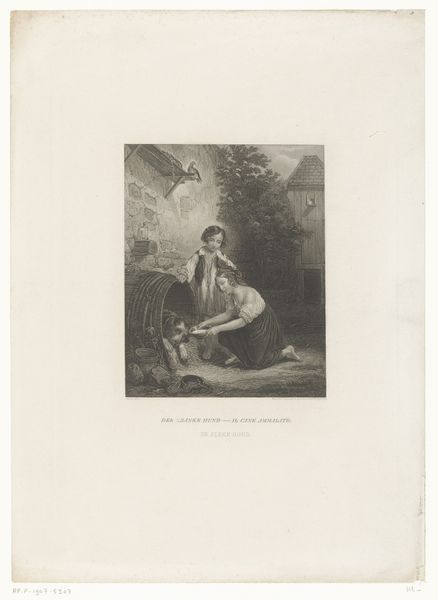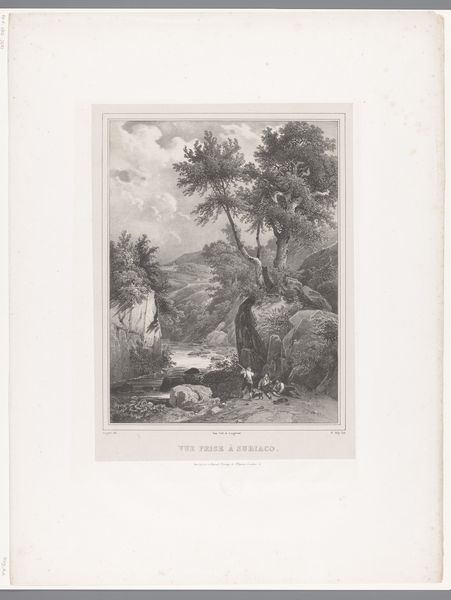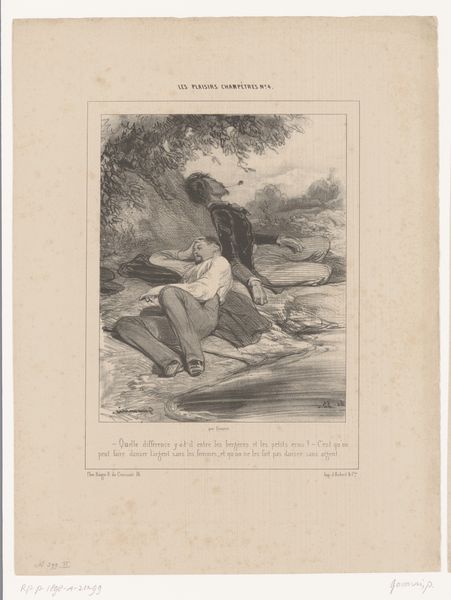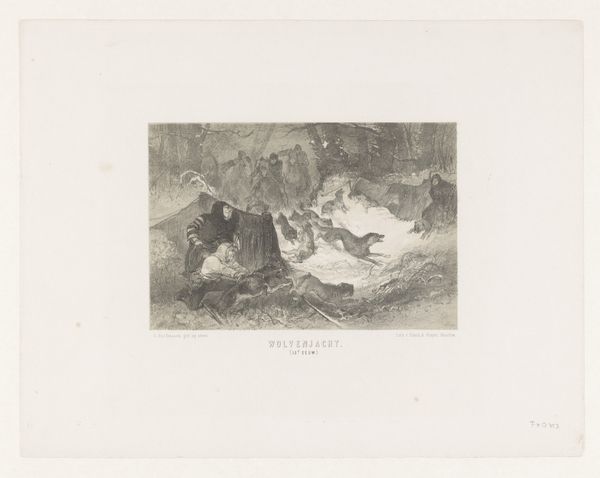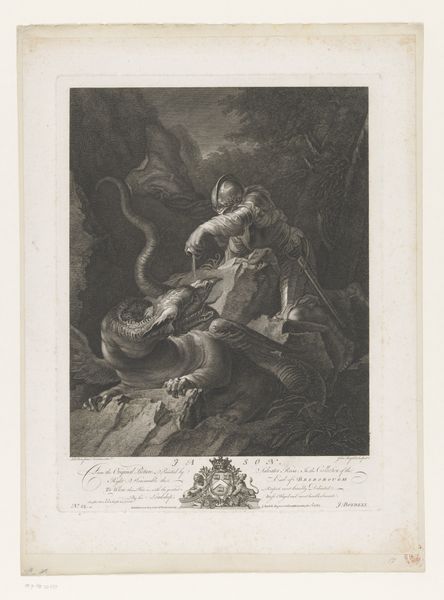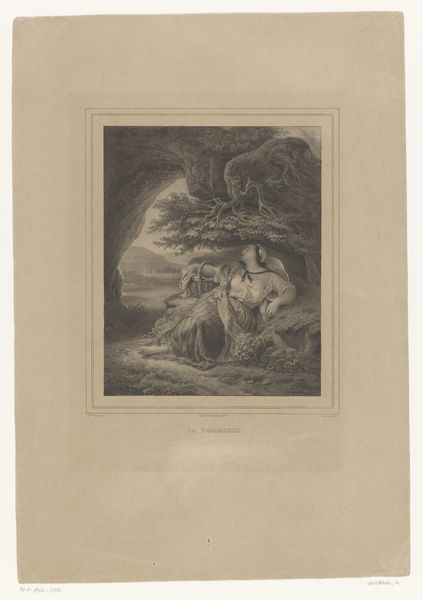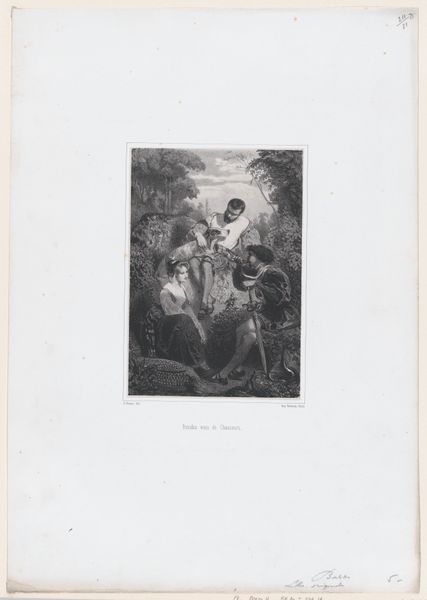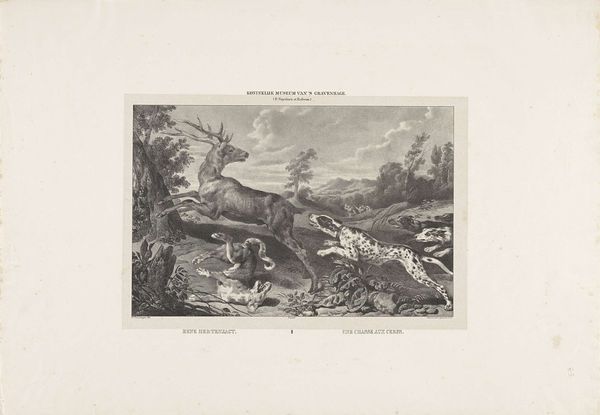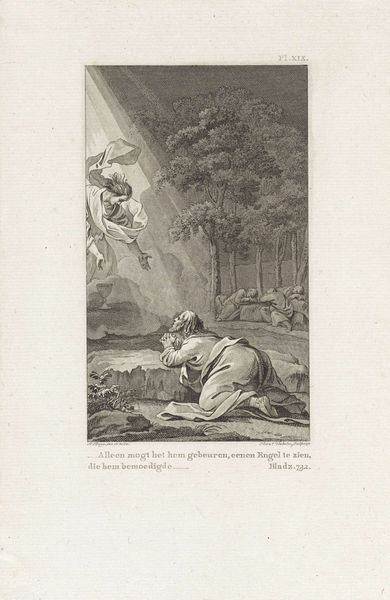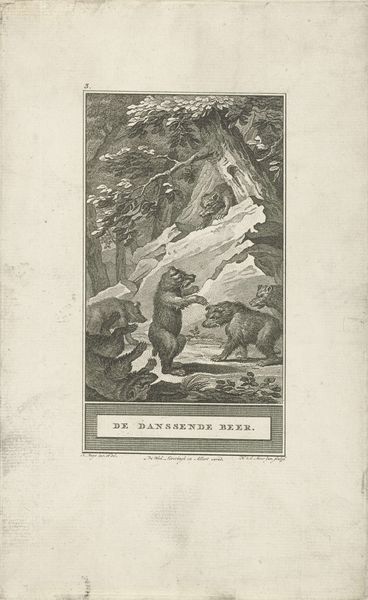
print, engraving
#
narrative-art
# print
#
landscape
#
figuration
#
romanticism
#
history-painting
#
engraving
Dimensions: height 227 mm, width 146 mm
Copyright: Rijks Museum: Open Domain
François-Adolphe-Bruneau Audibran produced this print called ‘Death of Abel’ in France sometime in the first half of the 19th century. Audibran’s image taps into a long history of artistic depictions of the story of Cain and Abel, found in the Book of Genesis. Here we see the moment after Cain has murdered his brother, Abel. The presentation of Abel’s naked corpse and Cain’s expression of shock and remorse serve as a powerful moral lesson. The print was made at a time when traditional religious values were being challenged by new scientific discoveries. Such imagery reaffirms traditional values, but it also speaks to the changing role of religious institutions in French society. To understand the print better, we can look into the role that religion played in 19th-century French art. What was the attitude of the art establishment to religious art? And how did changes in the church affect the production of images like this?
Comments
No comments
Be the first to comment and join the conversation on the ultimate creative platform.
